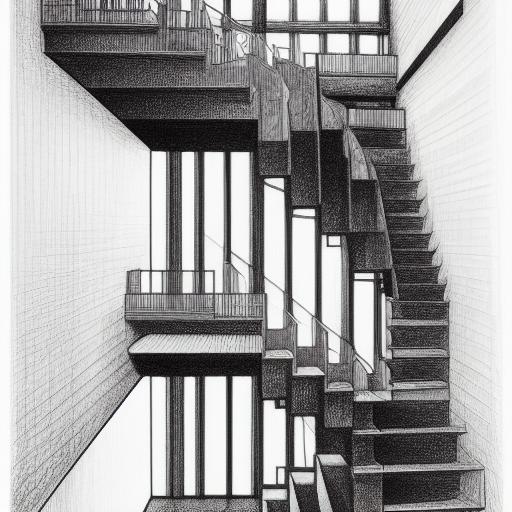Escher lithography
Escher lithography is a printing technique that was popularized by the Dutch artist M.C. Escher. Lithography involves drawing an image onto a flat stone or metal plate using a greasy substance such as a lithographic crayon or ink. The plate is then chemically treated so that the image areas attract ink and the non-image areas repel ink.
Escher used this technique to create intricate, detailed prints that often featured impossible geometric shapes and surreal imagery. He would often use a process called “tessellation,” which involves repeating a shape or pattern over and over again to create a seamless design.
Escher’s lithographs are highly sought after by art collectors and enthusiasts and are considered masterpieces of printmaking. The level of skill and precision required to create these intricate designs is a testament to Escher’s artistic talent and dedication to his craft.
What is AI-generated art?
AI-generated art refers to artwork that is produced through the use of artificial intelligence algorithms. This approach offers many advantages over traditional methods, such as speed, efficiency, and the ability to explore different styles and techniques. Moreover, AI-generated art can be tailored to meet specific requirements, making it a valuable tool for designers and artists alike. By embracing AI-generated art, the art industry can become more diverse and inclusive, providing a platform for artists from diverse backgrounds to share their unique perspectives and experiences.
To incorporate AI-generated art into their projects, designers and artists can leverage a variety of online tools and resources, such as Visual Paradigm Online. Additionally, they can explore the vast creative potential of AI-generated art through platforms like Stable Diffusion, Midjourney, and Dalle 2, which offer a wide range of tools and techniques for generating original works of art. By experimenting with AI-generated art, designers and artists can unlock new levels of creativity and expressiveness, leading to the creation of truly innovative and inspiring works of art.
How to create this prompt?
The first part of the prompt is “a drawing of lots of staircases in a building.” This sets the primary subject matter of the image: a building with a complex network of staircases. The word “lots” implies that there are many staircases, which suggests a level of complexity and intricacy to the image.
The second part of the prompt is “an engraving by MC Escher.” This gives the image a specific style and aesthetic. Escher was known for his intricate, surreal drawings that often played with perspective and impossible geometry. By referencing Escher, the prompt is telling the AI to generate an image that incorporates these elements.
The third part of the prompt is “tumblr,” which suggests a more modern, internet-based aesthetic. Tumblr is a popular platform for sharing and creating visual art, and has a particular style that is often associated with it. This part of the prompt could influence the overall color scheme or composition of the image.
The fourth part of the prompt is “surrealism,” which further emphasizes the need for the image to be unusual or dreamlike. Surrealist art often incorporates unexpected or irrational elements, which could be represented in the AI-generated image through warped or distorted shapes or impossible perspectives.
The final part of the prompt is “MC Escher art,” which again reinforces the need for the image to be reminiscent of Escher’s work. This could influence the overall composition, style, and subject matter of the image.


